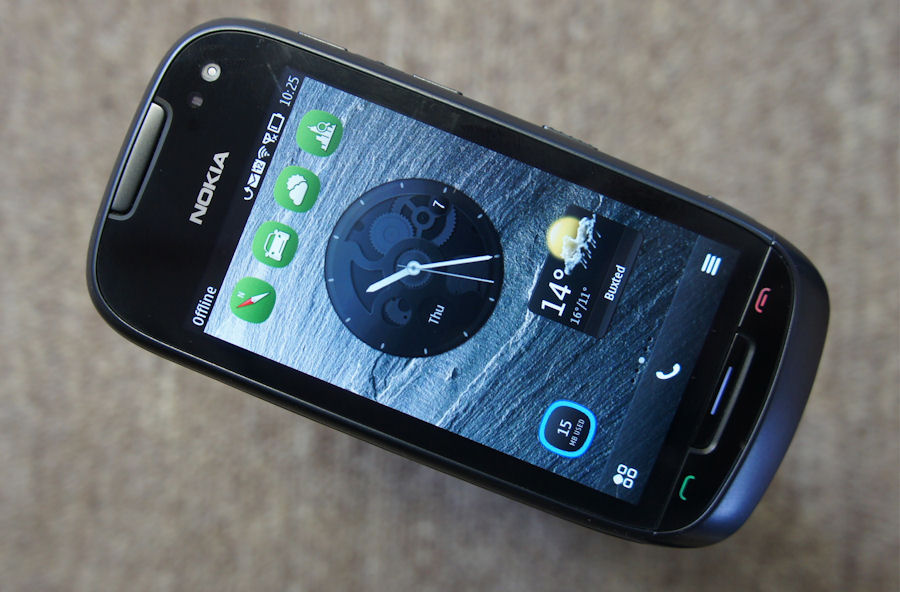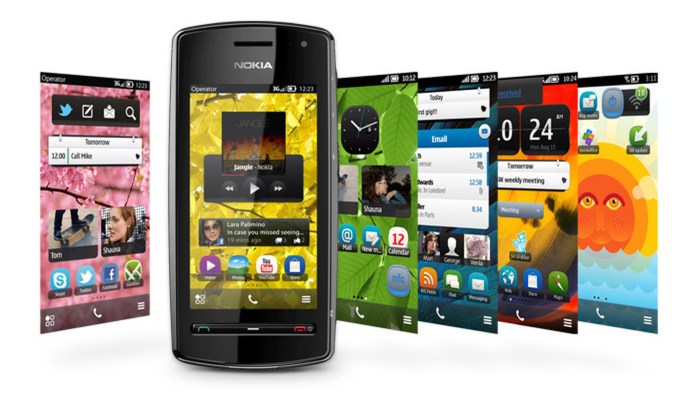Nokia Updates Symbian Belle Feature Pack 1 and FP 2 phones: Remember those sleek Nokia phones, the ones that ruled the roost before the iPhone era? This deep dive unearths the often-forgotten updates that breathed new life into Symbian Belle, exploring the features, the impact on Nokia handsets, and the legacy they left behind. We’re talking smoother interfaces, improved performance, and a whole lotta nostalgia.
From the subtle tweaks in Feature Pack 1 to the more substantial enhancements in Feature Pack 2, we’ll dissect what made these updates tick. We’ll explore which Nokia models got the upgrade, the user experience changes, and even delve into the technical nitty-gritty. Get ready for a trip down memory lane – one that’s surprisingly tech-heavy.
Technical Aspects of the Updates
Symbian Belle Feature Pack 1 and 2 brought significant improvements to Nokia’s Symbian platform, addressing performance issues, enhancing user experience, and bolstering security. These updates weren’t just incremental tweaks; they represented a concerted effort to revitalize a mature operating system and extend its lifespan. Let’s delve into the technical details.
Software Architecture Changes
The Feature Packs primarily focused on optimizing existing components rather than implementing radical architectural overhauls. Improvements centered around memory management, resulting in smoother multitasking and reduced application crashes. The underlying kernel received minor updates for enhanced stability and responsiveness. Furthermore, the user interface framework saw refinements, leading to improved animation fluidity and a more polished visual experience. These changes weren’t visually groundbreaking, but they demonstrably improved the day-to-day usability of the phones. For example, the improved memory management noticeably reduced the frequency of the dreaded “force close” messages that plagued earlier Symbian versions.
Update Installation Process
Installing the Feature Packs typically involved connecting the Nokia phone to a computer running Nokia Suite (or its predecessor, Ovi Suite). The software would then detect the available update and guide the user through the download and installation process. This was a relatively straightforward procedure, although it required a stable internet connection and sufficient battery life on the phone. The process involved several stages, including downloading the update package, verifying its integrity, and finally, applying the changes to the phone’s system files. A reboot was usually necessary upon completion to fully integrate the updates. Users were advised to back up their data before initiating the update to prevent data loss in case of unexpected issues.
Security Patches and Bug Fixes
Both Feature Packs incorporated numerous security patches addressing vulnerabilities discovered in previous Symbian releases. These patches targeted known exploits that could potentially allow malicious software to access sensitive user data or compromise the phone’s functionality. Specific details about the patched vulnerabilities were generally not publicly disclosed by Nokia due to security concerns, but the updates demonstrably improved the overall security posture of the devices. Additionally, the updates included numerous bug fixes targeting various aspects of the operating system and pre-installed applications. These fixes addressed issues ranging from minor UI glitches to more significant performance problems, improving the overall reliability and stability of the platform. For instance, fixes addressed issues with specific applications freezing or crashing, and improved overall system responsiveness.
Known Issues and Resolutions, Nokia updates symbian belle feature pack 1 and fp 2 phones
While the Feature Packs aimed for improved stability, some users encountered issues. The following list summarizes some known problems and their potential solutions:
- Issue: Data loss after update. Resolution: Always back up data before installing any system update. If data loss occurred, recovery might be possible through a data recovery tool, but success is not guaranteed.
- Issue: Application incompatibility. Resolution: Some older applications might not be fully compatible with the updated system. Check for application updates or consider alternative applications.
- Issue: Unexpected reboots. Resolution: This could be due to conflicting applications or low memory. Try uninstalling recently installed applications or removing unnecessary data from the phone.
- Issue: Slow performance. Resolution: A factory reset might be necessary in some extreme cases. Ensure to back up your data beforehand.
Illustrative Examples: Nokia Updates Symbian Belle Feature Pack 1 And Fp 2 Phones
Symbian Belle Feature Pack 1 and 2 brought significant improvements to the Nokia smartphone experience. Let’s explore some real-world examples showcasing these enhancements. These updates weren’t just about technical jargon; they directly impacted how users interacted with their phones daily.
Imagine Sarah, a busy professional constantly juggling emails, appointments, and social media. Before Feature Pack 1, managing her calendar and contacts felt cumbersome. Feature Pack 1 introduced improved multitasking, allowing Sarah to seamlessly switch between her email client and calendar app without experiencing significant lag. This streamlined workflow, saving her precious time and reducing frustration.
Improved Multitasking in Feature Pack 1
The introduction of improved multitasking in Feature Pack 1 was a game-changer. Previously, switching between applications often involved noticeable delays and occasional crashes. The update optimized the system’s memory management, enabling a smoother transition between apps. This made multitasking significantly more efficient and user-friendly. The visual difference was subtle but noticeable: the application switching animation became faster and more fluid. The overall responsiveness of the phone also improved significantly, leading to a more satisfying user experience.
Visual Changes in the User Interface
The visual overhaul brought by Feature Pack 1 and 2 wasn’t revolutionary, but it was noticeable. The most significant change was the refined color palette. The colors became richer and more vibrant, making the interface feel more modern and less dull. Icons were also subtly redesigned, offering a cleaner, more consistent look. The overall aesthetic shift moved away from the somewhat dated look of previous Symbian versions towards a more contemporary design language. The fonts also received a slight update, enhancing readability across various screen sizes. The improved clarity and organization made navigating the phone’s various menus and settings more intuitive.
Key Screen from Symbian Belle Feature Pack 2: The Updated Messaging App
Imagine a screen showing the updated messaging application. The text bubbles are now slightly larger and more rounded, providing a more spacious feel. The font is crisper, improving readability. At the top of the screen, the contact’s name is prominently displayed, along with a small profile picture if available. Below the message thread, there’s a clearly defined input field for typing new messages, with easily accessible buttons for sending, attaching files, and accessing emoticons. The overall design is clean, uncluttered, and intuitively organized. The visual cues are clear and easy to understand, minimizing the learning curve for new users.
Addressing User Complaints: Improved Battery Life in Feature Pack 2
One common complaint about earlier Symbian versions was poor battery life. Feature Pack 2 addressed this directly through software optimizations. By improving power management and background processes, the update significantly extended battery life. For example, a user who previously needed to charge their phone twice a day might now only need to charge it once, representing a substantial improvement in daily usability. This wasn’t achieved through a single fix, but through a combination of fine-tuning various system processes, leading to noticeable improvements in power efficiency across various usage scenarios.
Symbian Belle’s Feature Packs 1 and 2 weren’t just incremental updates; they represented Nokia’s last-ditch effort to stay competitive in a rapidly evolving mobile landscape. While ultimately overshadowed by the rise of iOS and Android, these updates offer a fascinating glimpse into the evolution of mobile OSs and Nokia’s valiant attempt to keep its Symbian platform relevant. The legacy of these updates? A reminder that even in the face of disruptive change, innovation (however fleeting) still holds its place.
 Invest Tekno Berita Teknologi Terbaru
Invest Tekno Berita Teknologi Terbaru

